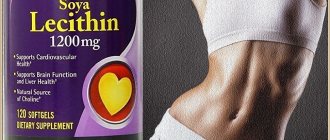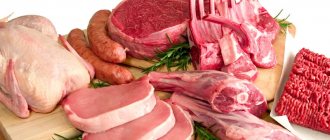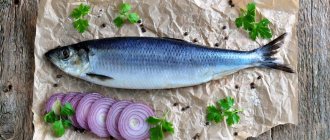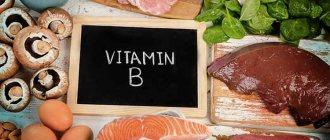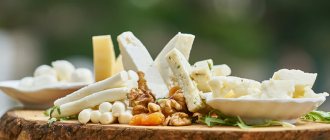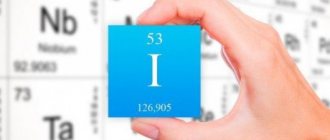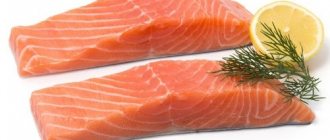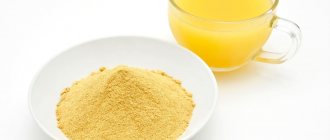The role of vitamin D in the body
Vitamin D (D) is a fat-soluble organic compound necessary for the proper functioning of the immune and nervous systems, the development of bone and muscle tissue, and to control cell growth.
By supporting a healthy immune system, vitamin D protects the body from infections.
Vitamin D helps absorb calcium and phosphorus, strengthening bones and teeth. It is very important for older people, as it prevents the development of osteoporosis. Recent studies have shown that this same vitamin promotes the absorption of iron, magnesium and zinc.
High doses of vitamin D are used in the treatment of osteomalacia, renal osteodystrophy and renal failure, rheumatoid arthritis, multiple sclerosis, chronic obstructive pulmonary disease, bronchitis, and asthma. It is believed that it can relieve PMS, as well as help cope with skin diseases such as psoriasis, keratosis, lupus, vitiligo and scleroderma.
It is recommended to be taken for diseases with phosphorus deficiency - Fanconi syndrome and familial hypophosphoatemia - and calcium deficiency - hypoparathyroidism and pseudohypoparateriosis.
Vitamin D is called the “sunshine vitamin”
Deficiency and excess of vitamin D in the body
A lack of vitamin D can lead to serious health problems. Deficiency can cause rickets and osteoporosis, diseases characterized by soft, brittle bones that often break and become deformed. It can cause diabetes, arthritis, hypertension, autoimmune diseases, and depression. Modern researchers are inclined to believe that vitamin D deficiency is one of the factors contributing to the development of certain types of cancer.
The body does not store vitamin D reserves for more than 60 days.
You can assume that you have a vitamin D deficiency if you get tired easily, experience muscle weakness, frequent headaches, have trouble sleeping and unmotivated weight gain.
There are certain risk groups, those who most often have a deficiency of the “sunshine vitamin”. These include:
- pregnant and lactating women;
- children under 6 months of age whose mothers did not take vitamin D supplements during pregnancy;
- children from 6 months to 5 years;
- people over 50 years old;
- people with darker skin tones, because... it absorbs sunlight more slowly;
- people who spend most of their time indoors.
If you are concerned about your vitamin D levels, get a blood test.
Since vitamin D is fat-soluble, it can accumulate in liver cells, which means hypervitaminosis D is also possible. An excess of this compound will, first of all, lead to the body absorbing too high doses of calcium, and this can cause the deposition of kidney stones or even provoke heart attack. Excessive amounts of vitamin D also contribute to polyuria—excessive urine production—and extreme weight loss.
Recommended daily dose of vitamin D
The required daily dose of vitamin D depends on age. Infants under one year of age need about 400 IU per day, children and adults up to 70 years of age need up to 600 IU per day daily, and older people should increase the dose of the vitamin to 800 IU.
Of course, if you have vitamin deficiency or hypervitaminosis D, then the daily dose should be increased or decreased.
Seafood rich in vitamin D
Seafood is especially rich in the “sunshine” vitamin. Fatty fish varieties are recognized as one of its best sources. So 100 grams of canned salmon contains about 90% of the required daily dose. Wild salmon will contain several times more vitamin D than salmon raised in cages. Fish that lived in cold water will be preferable to those that lived in warm waters. Thus, Alaskan salmon contains 5 times more vitamin D than the same salmon caught in the southern latitudes of the Atlantic Ocean.
Fish is one of the best sources of vitamin D
You will also find significant amounts of the vitamin in the following types of fish:
- Atlantic herring (up to 310 IU per 100g);
- reef perch or snapper (up to 400 IU per 100g);
- mackerel (more than 400 IU per 100g);
- canned sardines (up to 270 IU per 100g);
- halibut (more than 150 IU per 100g);
- tuna (more than 120 IU per 100g).
The vitamin D content in cod liver is so high that a food supplement - cod liver oil - is specially made from it. One capsule of this oil contains not only more than 1000 IU of valuable vitamin, but also equally useful omega-3 fatty acids, as well as vitamin A.
Red and black caviar can provide you with up to 230 IU of vitamin D per one hundred gram serving, and in six medium oysters you will find up to 70% of the recommended daily intake. One hundred grams of shrimp will contain about 150 IU of vitamin E. They can be recommended for those who are trying to reduce the fat content in their diet.
What to do if you have a vitamin D deficiency?
There are two ways to solve the problem:
- Taking specialized medications and supplements.
- Eating foods with plenty of vitamin D.
Special preparations allow you to get the required amount of the substance per day.
But there is one drawback - the synthesis of such substances occurs with a large number of components. As a result, many children and adults experience allergic reactions to vitamin D oil formulations. Eating foods that are rich in vitamin D is a much more effective way to increase its content.
If you don’t know which foods contain more vitamin D, then below is a list that will allow you to structure your diet in such a way as to cover the deficiency of the useful substance.
Vitamin D is found in the following foods:
- Cod liver.
- Egg yolk.
- Black caviar.
- Goat milk.
- Butter.
- Hard cheese.
- Salmon (pink salmon).
Moreover, if we form a rating from these products, then the largest amount of vitamin D per 100 grams is contained in fish oil and cod liver.
Meat and eggs
Although meat is an excellent source of a variety of nutrients, it contains relatively little vitamin D. Only certain cuts of pork and beef liver can help satisfy a person’s daily need for this vital vitamin. Pork can contain up to 60 IU of vitamin D per 100 g, and liver - up to 50 IU.
Vitamin D should be “looked for” in pork and beef liver
Small doses of vitamin D are also found in eggs, but only in the yolks. The yolks of two medium eggs will contain up to 90 IU of the beneficial organic compound.
Vitamin D content in fruits and vegetables
Table of vitamin D content in products from the category - fruits and vegetables. The chart shows the percentage of vitamin D required per day based on a 100g serving.
| № | Quantity | Share of daily value per 100 g | |
| 1 | Mashed potatoes with milk and butter, prepared | 0.2 mcg | 1,3% |
| 2 | Red beans (Kidney) sprouted fresh | 0.0 µg | 0,0% |
| 3 | Boiled variegated beans (Pinto) | 0.0 µg | 0,0% |
| 4 | Fresh sprouted variegated beans (Pinto) | 0.0 µg | 0,0% |
| 5 | Boiled pink beans | 0.0 µg | 0,0% |
| 6 | Boiled black beans | 0.0 µg | 0,0% |
| 7 | Boiled black-eyed beans | 0.0 µg | 0,0% |
| 8 | Fresh blueberries | 0.0 µg | 0,0% |
| 9 | Carrots raw (fresh) | 0.0 µg | 0,0% |
| 10 | Boiled carrots | 0.0 µg | 0,0% |
| 11 | Boiled pigeon peas | 0.0 µg | 0,0% |
| 12 | Peas boiled in water (ripe) | 0.0 µg | 0,0% |
| 13 | Fresh green peas | 0.0 µg | 0,0% |
| 14 | Fennel, raw (fruit or root) | 0.0 µg | 0,0% |
| 15 | Fresh sprouted peas | 0.0 µg | 0,0% |
| 16 | Canned green peas | 0.0 µg | 0,0% |
| 17 | Fresh vegetable physalis | 0.0 µg | 0,0% |
| 18 | Dates Deglet nur | 0.0 µg | 0,0% |
| 19 | Fresh pomegranate | 0.0 µg | 0,0% |
| 20 | Dates Majul | 0.0 µg | 0,0% |
| 21 | Fresh grapefruit | 0.0 µg | 0,0% |
| 22 | Dry chickpeas | 0.0 µg | 0,0% |
| 23 | Boiled chickpeas | 0.0 µg | 0,0% |
| 24 | Fresh breadfruit | 0.0 µg | 0,0% |
| 25 | Fresh cucumbers | 0.0 µg | 0,0% |
| 26 | Fresh dandelion leaves | 0.0 µg | 0,0% |
| 27 | Chicory root, raw | 0.0 µg | 0,0% |
| 28 | Fresh pear | 0.0 µg | 0,0% |
| 29 | Canned olives | 0.0 µg | 0,0% |
| 30 | Fresh chicory leaves | 0.0 µg | 0,0% |
| 31 | Fresh guava | 0.0 µg | 0,0% |
| 32 | Canned green olives | 0.0 µg | 0,0% |
| 33 | Chayote raw | 0.0 µg | 0,0% |
| 34 | Fresh daikon | 0.0 µg | 0,0% |
| 35 | Fenugreek seeds | 0.0 µg | 0,0% |
| 36 | Canned heart of palm | 0.0 µg | 0,0% |
| 37 | Raw garlic | 0.0 µg | 0,0% |
| 38 | Fresh melon | 0.0 µg | 0,0% |
| 39 | Lentils boiled in water | 0.0 µg | 0,0% |
| 40 | Fresh cantaloupe melon | 0.0 µg | 0,0% |
| 41 | Fresh papaya | 0.0 µg | 0,0% |
| 42 | Fresh sprouted lentils | 0.0 µg | 0,0% |
| 43 | Fresh blackberries | 0.0 µg | 0,0% |
| 44 | Fern (shoots) raw | 0.0 µg | 0,0% |
| 45 | Parsnip root raw | 0.0 µg | 0,0% |
| 46 | Cooked squash | 0.0 µg | 0,0% |
| 47 | Raw beetroot | 0.0 µg | 0,0% |
| 48 | Green bell pepper, fresh | 0.0 µg | 0,0% |
| 49 | Fresh mulberries | 0.0 µg | 0,0% |
| 50 | Fresh red bell pepper | 0.0 µg | 0,0% |
| 51 | Seedless raisins | 0.0 µg | 0,0% |
| 52 | Ginger extract powder | 0.0 µg | 0,0% |
| 53 | Red hot fresh chili pepper | 0.0 µg | 0,0% |
| 54 | Raw ginger root | 0.0 µg | 0,0% |
| 55 | Hot chili peppers dried in the sun | 0.0 µg | 0,0% |
| 56 | Fresh peach, pitted | 0.0 µg | 0,0% |
| 57 | Fresh parsley | 0.0 µg | 0,0% |
| 58 | Fresh figs | 0.0 µg | 0,0% |
| 59 | Fresh spinach | 0.0 µg | 0,0% |
| 60 | Boiled spinach | 0.0 µg | 0,0% |
| 61 | Fresh sorrel | 0.0 µg | 0,0% |
| 62 | Fried or baked zucchini (without oil) | 0.0 µg | 0,0% |
| 63 | Escarole cooked | 0.0 µg | 0,0% |
| 64 | Fresh tomatoes | 0.0 µg | 0,0% |
| 65 | Cooked tomatoes | 0.0 µg | 0,0% |
| 66 | Fresh purslane | 0.0 µg | 0,0% |
| 67 | Fresh apples | 0.0 µg | 0,0% |
| 68 | Fresh Brussels sprouts | 0.0 µg | 0,0% |
| 69 | Boiled Brussels sprouts | 0.0 µg | 0,0% |
| 70 | Yams cooked | 0.0 µg | 0,0% |
| 71 | Fresh cabbage, white cabbage | 0.0 µg | 0,0% |
| 72 | Boiled cabbage (white cabbage) | 0.0 µg | 0,0% |
| 73 | Sauerkraut (kimchi) | 0.0 µg | 0,0% |
| 74 | Fresh red cabbage | 0.0 µg | 0,0% |
| 75 | Raw curly cabbage | 0.0 µg | 0,0% |
| 76 | Fresh kale | 0.0 µg | 0,0% |
| 77 | Cooked cabbage (boiled) | 0.0 µg | 0,0% |
| 78 | Fresh Chinese cabbage | 0.0 µg | 0,0% |
| 79 | Fresh savoy cabbage | 0.0 µg | 0,0% |
| 80 | Fresh cauliflower | 0.0 µg | 0,0% |
| 81 | Boiled cauliflower | 0.0 µg | 0,0% |
| 82 | Radicchio fresh | 0.0 µg | 0,0% |
| 83 | Rhubarb stem raw | 0.0 µg | 0,0% |
| 84 | Fresh radish | 0.0 µg | 0,0% |
| 85 | Fresh turnip tops | 0.0 µg | 0,0% |
| 86 | Turnips raw | 0.0 µg | 0,0% |
| 87 | Boiled potatoes | 0.0 µg | 0,0% |
| 88 | Cooked turnips | 0.0 µg | 0,0% |
| 89 | Baked potatoes | 0.0 µg | 0,0% |
| 90 | Raw potatoes | 0.0 µg | 0,0% |
| 91 | French fries | 0.0 µg | 0,0% |
| 92 | Potato starch | 0.0 µg | 0,0% |
| 93 | Fresh kiwi | 0.0 µg | 0,0% |
| 94 | Cilantro (coriander leaves) fresh | 0.0 µg | 0,0% |
| 95 | Fresh strawberries | 0.0 µg | 0,0% |
| 96 | Fresh cranberries | 0.0 µg | 0,0% |
| 97 | Fresh arugula | 0.0 µg | 0,0% |
| 98 | Fresh iceberg lettuce | 0.0 µg | 0,0% |
| 99 | Salsify (salf's root) raw | 0.0 µg | 0,0% |
| 100 | Fresh head lettuce | 0.0 µg | 0,0% |
| 101 | Fresh lettuce | 0.0 µg | 0,0% |
| 102 | Fresh red lettuce | 0.0 µg | 0,0% |
| 103 | Fresh Roman salad | 0.0 µg | 0,0% |
| 104 | Fresh endive | 0.0 µg | 0,0% |
| 105 | Fresh kohlrabi | 0.0 µg | 0,0% |
| 106 | Boiled kohlrabi (cabbage) | 0.0 µg | 0,0% |
| 107 | Fresh beet tops | 0.0 µg | 0,0% |
| 108 | Raw beets | 0.0 µg | 0,0% |
| 109 | Boiled beets | 0.0 µg | 0,0% |
| 110 | Fresh watercress | 0.0 µg | 0,0% |
| 111 | Fresh celery | 0.0 µg | 0,0% |
| 112 | Raw corn | 0.0 µg | 0,0% |
| 113 | Boiled corn | 0.0 µg | 0,0% |
| 114 | Canned corn | 0.0 µg | 0,0% |
| 115 | Fresh plum | 0.0 µg | 0,0% |
| 116 | Fresh apricot | 0.0 µg | 0,0% |
| 117 | Prunes | 0.0 µg | 0,0% |
| 118 | Fresh soursop | 0.0 µg | 0,0% |
| 119 | Fresh kumquat | 0.0 µg | 0,0% |
| 120 | Fresh red or white currants | 0.0 µg | 0,0% |
| 121 | Avocado fresh | 0.0 µg | 0,0% |
| 122 | Dried apricots | 0.0 µg | 0,0% |
| 123 | Fresh amaranth leaves | 0.0 µg | 0,0% |
| 124 | Raw asparagus | 0.0 µg | 0,0% |
| 125 | Fresh pineapple | 0.0 µg | 0,0% |
| 126 | Boiled asparagus | 0.0 µg | 0,0% |
| 127 | Starfruit (starfruit) fresh | 0.0 µg | 0,0% |
| 128 | Fresh oranges | 0.0 µg | 0,0% |
| 129 | Peanuts raw | 0.0 µg | 0,0% |
| 130 | Roasted peanuts | 0.0 µg | 0,0% |
| 131 | Fresh watermelon | 0.0 µg | 0,0% |
| 132 | Boiled artichokes | 0.0 µg | 0,0% |
| 133 | Boiled Spanish artichokes | 0.0 µg | 0,0% |
| 134 | Cooked eggplant | 0.0 µg | 0,0% |
| 135 | Boiled bamboo shoots | 0.0 µg | 0,0% |
| 136 | Fresh lime | 0.0 µg | 0,0% |
| 137 | Dry soy tofu cheese | 0.0 µg | 0,0% |
| 138 | Raw okra | 0.0 µg | 0,0% |
| 139 | Hard tofu cheese (linen) | 0.0 µg | 0,0% |
| 140 | Fresh bananas | 0.0 µg | 0,0% |
| 141 | Raw milkweed shoots | 0.0 µg | 0,0% |
| 142 | Fermented tofu cheese (fuyu) | 0.0 µg | 0,0% |
| 143 | Dried bananas | 0.0 µg | 0,0% |
| 144 | Fresh plantains | 0.0 µg | 0,0% |
| 145 | Raw sweet potato | 0.0 µg | 0,0% |
| 146 | Boiled butterbur | 0.0 µg | 0,0% |
| 147 | Quinoa fresh | 0.0 µg | 0,0% |
| 148 | Boiled beans (ripe) | 0.0 µg | 0,0% |
| 149 | Boiled green beans | 0.0 µg | 0,0% |
| 150 | Fresh green beans | 0.0 µg | 0,0% |
| 151 | Soybean cake | 0.0 µg | 0,0% |
| 152 | Fresh lemon, without peel | 0.0 µg | 0,0% |
| 153 | Soy Protein (Isolate) Powder | 0.0 µg | 0,0% |
| 154 | Fresh lychees | 0.0 µg | 0,0% |
| 155 | Soy protein (concentrate) powder | 0.0 µg | 0,0% |
| 156 | Soy sauce (hydrolyzed) | 0.0 µg | 0,0% |
| 157 | Frozen logan berry | 0.0 µg | 0,0% |
| 158 | Soy sauce (tamari) | 0.0 µg | 0,0% |
| 159 | Boiled soybeans (ripe) | 0.0 µg | 0,0% |
| 160 | Boiled burdock root | 0.0 µg | 0,0% |
| 161 | Fresh sprouted soybeans | 0.0 µg | 0,0% |
| 162 | Fresh tamarind | 0.0 µg | 0,0% |
| 163 | Edamame cooked | 0.0 µg | 0,0% |
| 164 | Taro cooked tubers | 0.0 µg | 0,0% |
| 165 | Fresh broccoli | 0.0 µg | 0,0% |
| 166 | Fresh green onion | 0.0 µg | 0,0% |
| 167 | Chinese fresh broccoli | 0.0 µg | 0,0% |
| 168 | Fresh onions | 0.0 µg | 0,0% |
| 169 | Chinese cooked broccoli | 0.0 µg | 0,0% |
| 170 | Boiled onions | 0.0 µg | 0,0% |
| 171 | Boiled broccoli | 0.0 µg | 0,0% |
| 172 | Fresh onion | 0.0 µg | 0,0% |
| 173 | Fresh broccoli raab | 0.0 µg | 0,0% |
| 174 | Fresh leek | 0.0 µg | 0,0% |
| 175 | Jerusalem artichoke raw | 0.0 µg | 0,0% |
| 176 | Broccoli raab cooked | 0.0 µg | 0,0% |
| 177 | Leeks cooked | 0.0 µg | 0,0% |
| 178 | Raw rutabaga | 0.0 µg | 0,0% |
| 179 | Fresh shallots | 0.0 µg | 0,0% |
| 180 | Fresh chives | 0.0 µg | 0,0% |
| 181 | Lupine (lupine beans) cooked | 0.0 µg | 0,0% |
| 182 | Fresh pumpkin leaves | 0.0 µg | 0,0% |
| 183 | Wasabi root raw | 0.0 µg | 0,0% |
| 184 | Fresh sprouted alfalfa seeds | 0.0 µg | 0,0% |
| 185 | Raw pumpkin | 0.0 µg | 0,0% |
| 186 | Boiled or baked pumpkin | 0.0 µg | 0,0% |
| 187 | Grapes (red or green) fresh | 0.0 µg | 0,0% |
| 188 | Fresh raspberries | 0.0 µg | 0,0% |
| 189 | Fresh grape leaves | 0.0 µg | 0,0% |
| 190 | Mango fresh | 0.0 µg | 0,0% |
| 191 | Fresh chard | 0.0 µg | 0,0% |
| 192 | Fresh clementine | 0.0 µg | 0,0% |
| 193 | Fresh tangerines | 0.0 µg | 0,0% |
| 194 | Fresh cherries | 0.0 µg | 0,0% |
| 195 | Fresh passion fruit | 0.0 µg | 0,0% |
| 196 | Boiled mung bean | 0.0 µg | 0,0% |
| 197 | Fresh sprouted mung bean | 0.0 µg | 0,0% |
| 198 | Boiled adzuki beans | 0.0 µg | 0,0% |
| 199 | Boiled white beans | 0.0 µg | 0,0% |
| 200 | Cooked cowpea (boiled) | 0.0 µg | 0,0% |
| 201 | Boiled green beans (asparagus) | 0.0 µg | 0,0% |
| 202 | Boiled red beans (Kidney) | 0.0 µg | 0,0% |
| 203 | Dried goji berries | n/a | 0,0% |
| 204 | Feijoa fresh | n/a | 0,0% |
| 205 | Fresh medlar | n/a | 0,0% |
| 206 | Physalis fresh | n/a | 0,0% |
| 207 | Jujube (Chinese date) fresh | n/a | 0,0% |
| 208 | Naranjilla frozen | n/a | 0,0% |
| 209 | Fresh persimmon | n/a | 0,0% |
| 210 | Fresh black persimmon (sapota) | n/a | 0,0% |
| 211 | Prickly pear (fruit) fresh | n/a | 0,0% |
| 212 | Fresh jambolan | n/a | 0,0% |
| 213 | Fresh jackfruit | n/a | 0,0% |
| 214 | Cherimoya fresh | n/a | 0,0% |
| 215 | Durian fresh | n/a | 0,0% |
| 216 | Fresh Suriname cherries | n/a | 0,0% |
| 217 | Fresh pomelo | n/a | 0,0% |
| 218 | Java apple fresh | n/a | 0,0% |
| 219 | Rambutan canned | n/a | 0,0% |
| 220 | Fresh carissa fruits | n/a | 0,0% |
| 221 | Kiwano fresh | n/a | 0,0% |
| 222 | Hibiscus flower, fresh | n/a | 0,0% |
| 223 | Sapodilla fruits fresh | n/a | 0,0% |
| 224 | Sugar apple fresh | n/a | 0,0% |
| 225 | Fresh gooseberries | n/a | 0,0% |
| 226 | Fresh Antillean apricot | n/a | 0,0% |
| 227 | Fresh black currant | n/a | 0,0% |
| 228 | Fresh quince | n/a | 0,0% |
| 229 | Amaranth grains cooked | n/a | 0,0% |
| 230 | Fresh longan | n/a | 0,0% |
| 231 | Fresh elderberry | n/a | 0,0% |
| 232 | Fresh grapes (muscat varieties) | n/a | 0,0% |
| 233 | Barbados cherry fresh | n/a | 0,0% |
Dairy
One glass of milk can provide about 20% of the body's daily requirement for vitamin D, but only if you are dealing with whole milk with a fat content of 2.5%. Since vitamin D is fat-soluble, skimming milk results in loss of the valuable organic compound. Moreover, skim milk additionally fortified with vitamin D will not benefit you, since the beneficial substance cannot be absorbed.
Whole milk is a good source of vitamin D
Butter, yogurt, sour cream, and cottage cheese made from whole milk can become a source of vitamin D. 100 g of 4.5% fat yogurt can contain up to 100 IU of vitamin D. Cheese contains little vitamin D, from 6 to 30 IU, and the harder the cheese, the more useful compounds it will contain.
Plant sources of vitamin D
Mushrooms are one of the most valuable sources of vitamin D for those following a vegan diet. But we are talking only about specially processed mushrooms. Champignons are irradiated with quartz lamps several hours before harvesting and the vitamin D content in them increases from a modest 30-40 IU to an impressive 400 IU per 100 g serving.
Bread is often fortified with vitamin D
Neither grains nor nuts naturally contain significant doses of vitamin D. However, manufacturers often fortify cereals and whole grain bread with useful substances, including vitamin D. Thus, one serving of fortified oatmeal can contain up to 160 IU of this organic compound.
Types of vitamin D
The calciferol group, which includes vitamin D, includes many components. But only two of them are useful for humans:
- Ergocalciferol – D2.
- Cholecalciferol – D3.
These vitamins enter the body in different ways.
So, D2 comes from food. It is found in grains and mushrooms, as well as in fruit juices. But D3 is that very “useful sunlight”. It is found in ultraviolet rays, as well as in quality butter and some fish. Vitamin D3 is actively involved in the vital processes of the body, therefore, it is considered especially useful.


